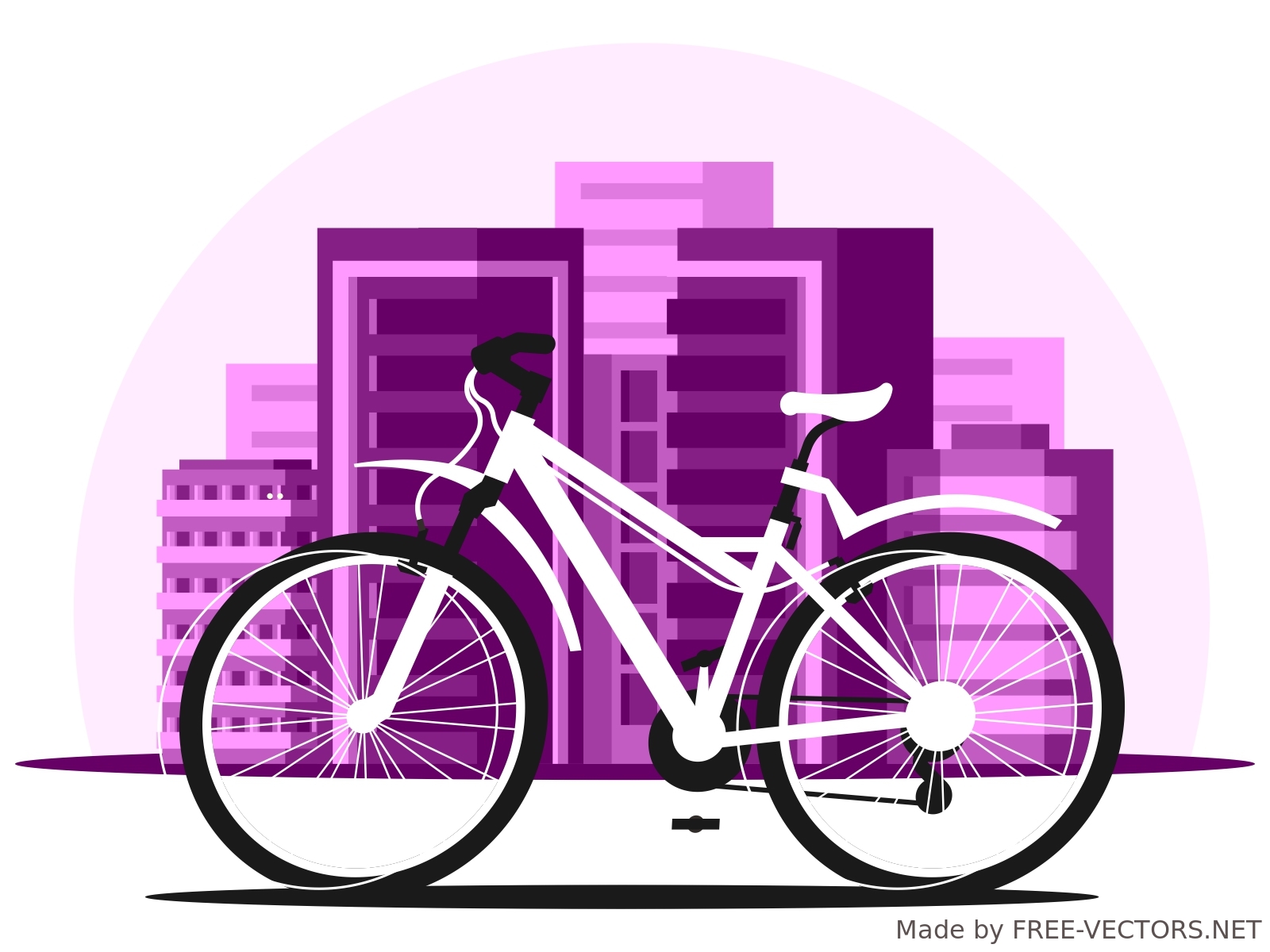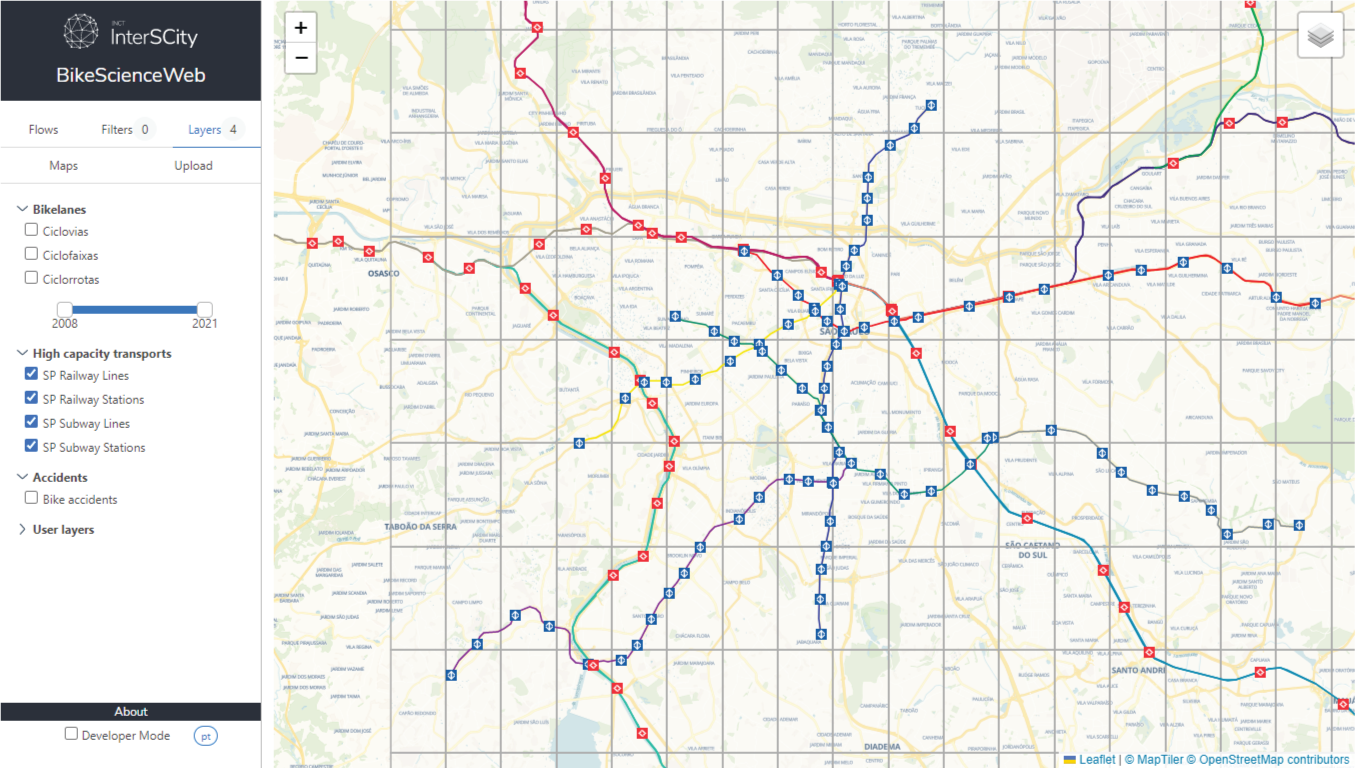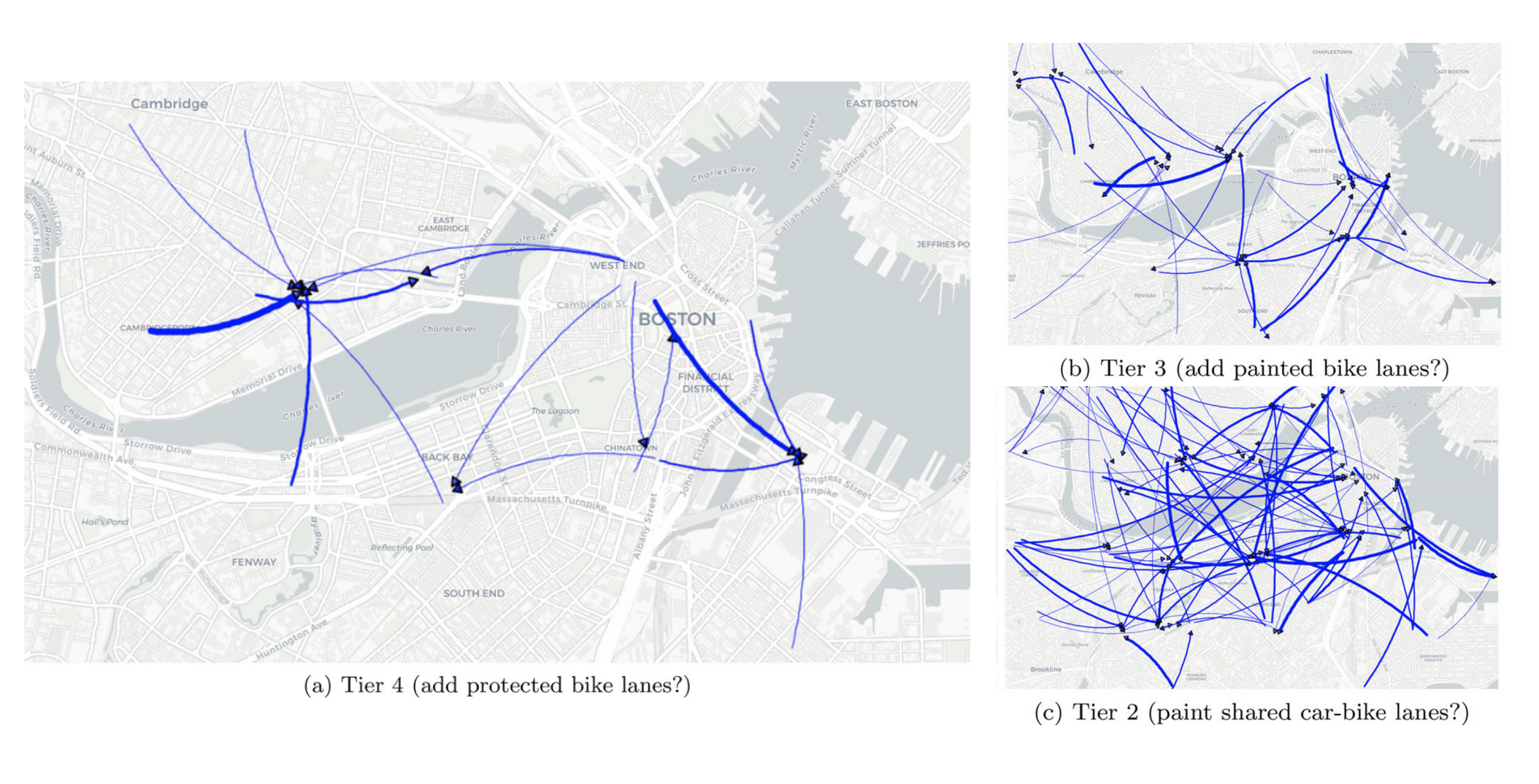BikeScience is a collaborative open source research project between the MIT Senseable City Lab and the InterSCity team at the University of São Paulo. The project relies on advanced Data Science techniques for investigating Bike-Sharing Systems around the world.

BikeScience is a data science tool that allows urban planners to analyze and understand the impact of urban bicycling in their cities. The tool uses data from Bike-Sharing Systems and travel surveys to analyze patterns of bike usage. Moreover, other data sources (e.g., bike infrastructure, accident records) can be added in BikeScience to improve the analyses. Such knowledge can be used to support future planning and improvements regarding bicycling.
Related pages:
BikeScienceWeb is a tool developed by InterSCity , the Future Internet for Smart Cities Project hosted at IME-USP. Its main goal is to ease access to visual analysis of bicycle mobility data. Thus, people interested in such information use the tool through a Web browser without the need for specific knowledge about programming languages.
Are provided on the web page a map with bicycle trip flows from São Paulo’s Origin-Destination survey. There are several filter options to visualize how bike trips occur in different situations, and other features such as flows and layers.

Abstract:
Cycling is a potential tool to mitigate many of the problems faced by urban populations today. As such, there has been a recent push towards this mode of transportation by city officials worldwide. Encouraging the use of bicycles as a legitimate mobility tool (as opposed to only a means of exercise or recreation), however, involves having adequate knowledge of current mobility patterns, such as locations of trip generation and attraction. Unfortunately, cities usually do not gather enough loop detector data on flows and/or enough cycling OD-demand data to adequately understand cycling demand. We propose models based on spatial econometrics and gradient boosted regression trees which can be trained with data from cities with mature cycling cultures and then applied to cities still in their cycling infancy to supply city officials with a better estimate of potential future OD Matrices so they can better promote this means of transportation. We perform a case study in the Boston Metropolitan Area and show results comparing both types of models.

Abstract:
Bicycling has grown significantly in the past ten years. In some regions, the implementation of large-scale bike-sharing systems and improved cycling infrastructure are two of the factors enabling this growth. An increase in non-motorized modes of transportation makes our cities more human, decreases pollution, traffic, and improves quality of life. In many cities around the world, urban planners and policymakers are looking at cycling as a sustainable way of improving urban mobility. Although bike-sharing systems generate abundant data about their users’ travel habits, most cities still rely on traditional tools and methods for planning and policy-making. Recent technological advances enable the collection and analysis of large amounts of data about urban mobility, which can serve as a solid basis for evidence-based policy-making. In this paper, we introduce a novel analytical method that can be used to process millions of bike-sharing trips and analyze bikesharing mobility, abstracting relevant mobility flows across specific urban areas. Backed by a visualization platform, this method provides a comprehensive set of analytical tools to support public authorities in making data-driven policy and planning decisions. This paper illustrates the use of the method with a case study of the Greater Boston bike-sharing system and, as a result, presents new findings about that particular system. Finally, an assessment with expert users showed that this method and tool were considered very useful, relatively easy to use and that they intend to adopt the tool in the near future.
Abstract:
This paper presents the process of implementing and using, at the Traffic Engineering Company of São Paulo (CET), BikeScience, a data analysis tool developed within the InterSCity project at the Institute of Mathematics and Statistics of the University of São Paulo (IME-USP). This work is the result of a partnership between CET and InterSCity researchers. Here, we describe the process of usingthe tool to perform analyzes contributing to the understanding and supporting the decision-making process on issues related to active urban mobility in São Paulo. We describe how the tool provides information about the profile of cyclists based on mobility data. We also present the results of a comparative analysis between trips of the 2017 Origin Destination Travel Survey and the cycling flow counts performed by CET. The results show which places in the city of São Paulo have the highest concentration of bicycle trips. Finally, we present future work that will be carried out with the support of the BikeScience tool.
Abstract:
This work aims to create an evidence-based model to indicate places with the most significant potential for bicycles’ use. We developed the SP Cycling Potential Index using literature reviews and statistical analyzes from the latest São Paulo Urban Mobility Survey to model the potential for migration to cycling. The variables we considered are the distance and slope of the routes, as well as the age and gender of individuals. We modeled continuous approximations of the distributions of the cyclists’ data to compose the model. Thus, we identified regions of the city with little cycling infrastructure but with a high potential for adopting bicycles. We hope that the model and analytical tools described in this work will influence bicycle mobility public policies.
Abstract:
Bicycle transportation is a sustainable mode of mobility that can benefit society in various ways, such as reducing environmental pollution, improving public health, and saving economic costs. Consequently, public policies that promote bicycle use have become increasingly relevant for transportation planning. A policy option that has been implemented in some countries, mainly in Europe, is financial incentives for cyclists. In 2016, the City Hall of São Paulo approved a law to introduce this policy in the city through the Bike SP program. However, the policy has not been operationalized yet, owing to the scarcity of previous implementations in a context comparable to São Paulo and of scientific evidence to support its design and execution. Therefore, this project aims to design and prepare the implementation of a pilot project that can provide empirical data and insights for the Bike SP program and define its key aspects, such as eligibility criteria, incentive amount, and evaluation metrics. This study adopts an interdisciplinary approach that combines data science and econometric techniques with social science theories on mobility and data justice, and it is conducted in collaboration with cycle mobility specialists and with the City Hall of São Paulo. Drawing on a pre-analysis plan, this work proposes a research methodology that can be generalized and applied to other emerging policy domains that, like Bike SP, require rigorous evaluation and testing due to the lack of precedents. The findings suggest that the Bike SP program can have an impact that goes beyond increasing the mode share of cycling, through the generation of cycling data and the development of a cycling community. The study also concludes that the program should be complemented by other measures that improve the safety and quality of cycling in the city, in a joint effort to create an inclusive cycling environment.
This study performed a data analysis to examine the effects of the COVID-19 pandemic on the bike-sharing system in the city of São Paulo, Brazil. The data source was Tembici, a leading bike-sharing company in Latin America, which provided data on the usage of its service from January 2018 to July 2023. The results revealed that the bike-sharing system experienced significant changes due to the pandemic.
Highlights: